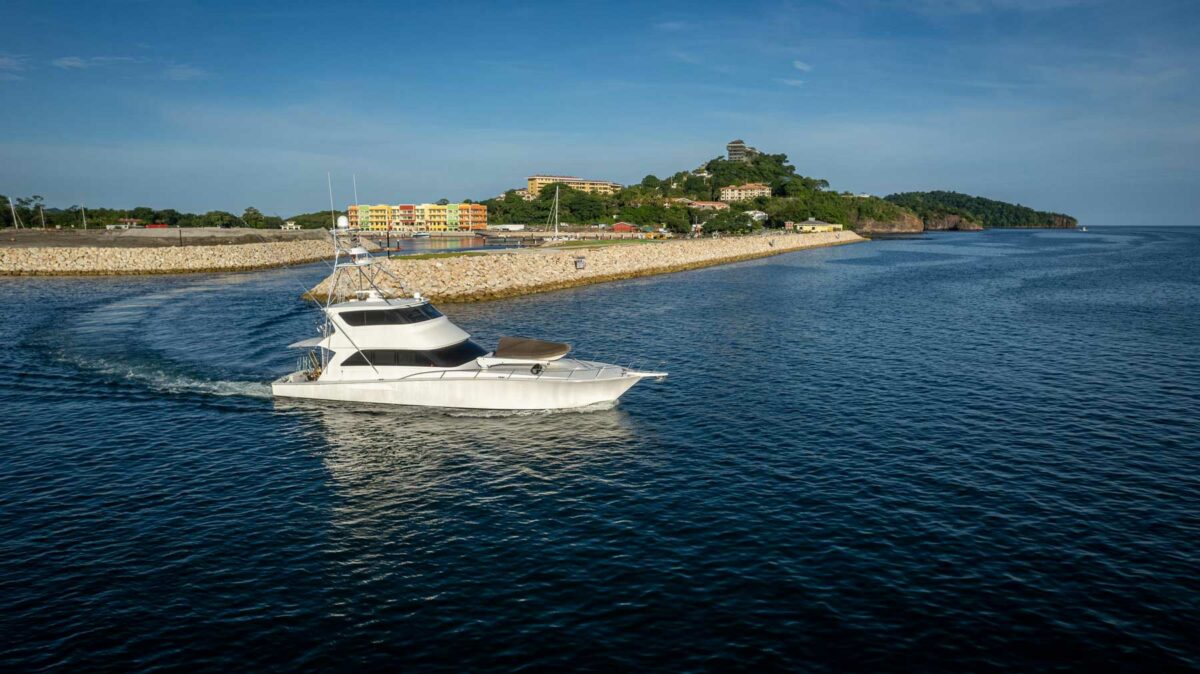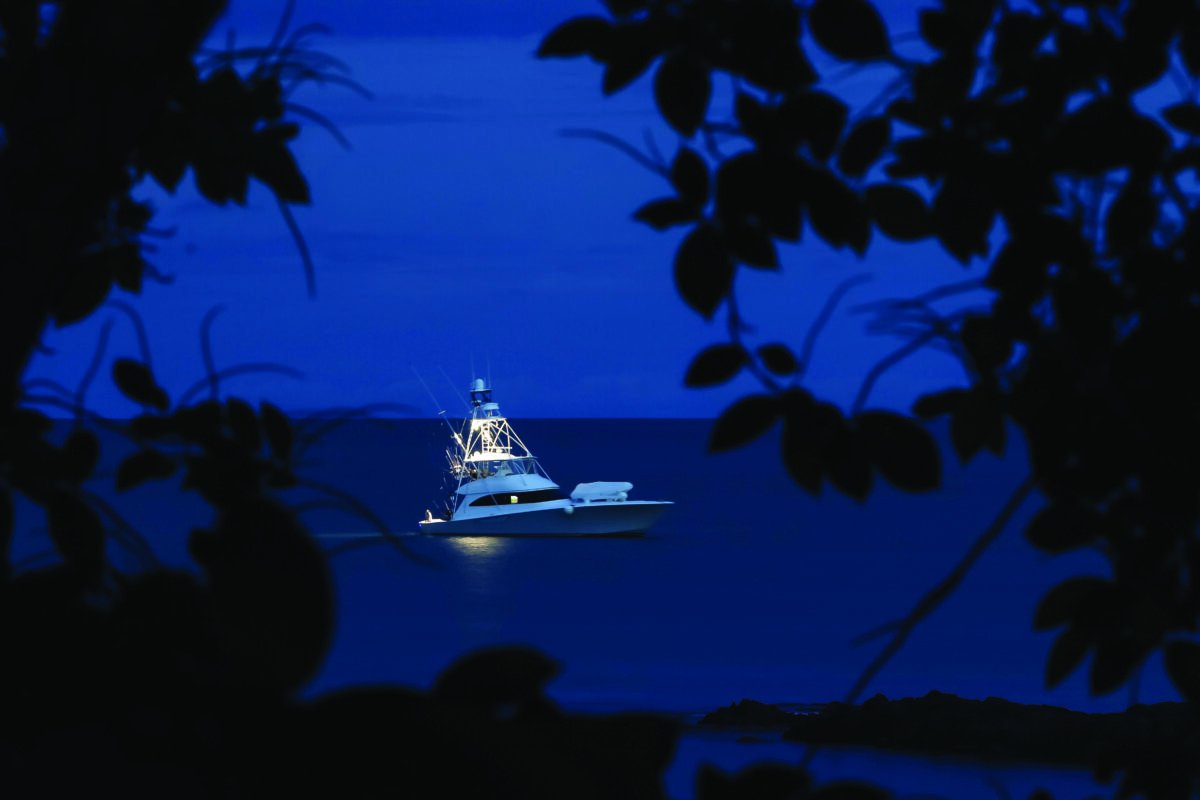A center console that can be trailered is a big advantage for those looking to fish different geographical locations across the continent. And the relative logistical ease and low cost of moving a boat via trailer can be more appealing than making the journey over waterways. As a professional charter boat captain with two boats that reside on trailers, I am very familiar with the view of a center console in the rearview mirror and the variety of issues that may arise while towing a boat.
A Trailer Permit
Recently, a friend and I began preparations to trailer his boat from the Florida panhandle to South Florida. I quickly realized what at first seemed like a simple task would take a bit of planning on our part to ensure a safe and free-of-traffic-citations trip. With a beam of 10 feet, his 36-foot Yellowfin is considered a wide load in the state of Florida and would require special permitting from the FDOT in order to make the journey south. The height of the vessel on the trailer was also a concern. While the total height of the vessel was under the 14-foot six-inch maximum, I worried about height clearance on local county and municipal roads. Roads maintained by cities and counties may not have the same FDOT-mandated clearance requirements, so the thought of giving the Yellowfin a radar removal with a tree branch or traffic signal was cringeworthy. Fortunately, FDOT makes the permitting process pretty painless, and after we spent a few minutes making an account and applying for the oversize permit on the permitting website, the permit arrived in the mail about a week later. FDOT also provides resources for route planning, which is helpful for ensuring minimum height clearance on smaller two-lane roads. In the case of interstate travel, ensure you check the laws and permitting for each state your journey will take you through as the laws and requirements can vary state to state.
Preparing for Arrival
With the permitting taken care of, I turned my attention to the road trip and what we needed to do logistically to ensure a safe arrival. A full safety check on the trailer was the first order of business, and I was quick to find two tires that could stand to be replaced before the trip. In addition to the six tires on the trailer, I added two spare tires and two spare hubs for backups. One can only imagine how much of a debacle it would be trying to locate the correct replacement hub from the side of the interstate, and having spare hubs on hand can help prevent a small roadside delay from turning into a major dilemma. An adequately rated floor jack, four-way wrench, grease gun with extra grease, chock blocks and socket set also made the packing list. A full brake inspection and service was also on the agenda, as well as ensuring all brake and turn signals were functional. With our planning stage complete, we departed on our journey to South Florida. Our preparations were rewarded, and we arrived at our destination incident-free and ready to splash the boat. Although we avoided any roadside mishaps, the peace of mind that came with proper planning was tremendously helpful.
Platt’s Trailer Tips
Capt. Bill Platt, a Yamaha Pro team member who regularly trailers his 39 SeaHunter cross country for boat shows and fishing tournaments, has logged thousands of miles towing his triple-axle Ameratrail trailer. Platt has no shortage of tips and advice for boat owners making the long haul. Most importantly you want to start with an overbuilt trailer, Platt states. Then the simple stuff like ensuring your general maintenance is taken care of, making sure the tire pressure on all tires is correct. Even thoroughly rinsing the trailer, brakes and calipers after use goes a long way to prevent roadside breakdowns. Capt. Platt also stressed the importance of strapping the boat down to the trailer properly, ensuring both the stern and bow are snug to the trailer to prevent any bouncing or shifting during the haul. You would be amazed how much damage a boat can sustain on a long trailer ride if the bow isnt secure, he says. In addition, he recommends adding an impact wrench to the toolkit to help expedite tire or hub swaps. Platt also suggests traveling at night when possible. Not only are traffic levels typically lower, but the summer heat diminishes at night, which keeps the trailer hubs cooler. If you are pulling the trailer during a hot summer day, the temperature on the road can exceed 110 degrees, which can cause the hubs to overheat. Pulling at night reduces that temperature by 30 to 40 degrees and greatly reduces the strain on the hubs, he says.
Trailblaze With Your Trailer
There is no reason to be intimidated by pulling your boat to a far away destination. Ensure your trailer is properly maintained and that you have a plan and resources available for roadside issues. This preparation will greatly increase the chances of an incident-free drive. Then, research your route and road laws, and take that trip!
Long Haul Boat Trailering Checklist
- Check with Department of Transportation in the state you will be traveling through
- Map out a safe route with minimum height clearance, state DOT will be helpful
- Make sure the trailered vessel height is under 13 max to be safe
- Check tire air pressure
- Carry two spare tires and two hubs
- Bring an adequately rated floor jack
- Four-way lug wrench
- Grease gun with extra grease
- Chock Blocks
- Socket Set
- Inspect trailer brakes
- Inspect trailer lights
- Flashlight
About Adam Peeples
Capt. Adam Peeples runs the One Shot Charters out of the Destin, Florida area. In addition to running a first-class operation, Peeples is a combat veteran with two deployments in Iraq and a stint as an instructor at the US Army Sniper School to his credit.













